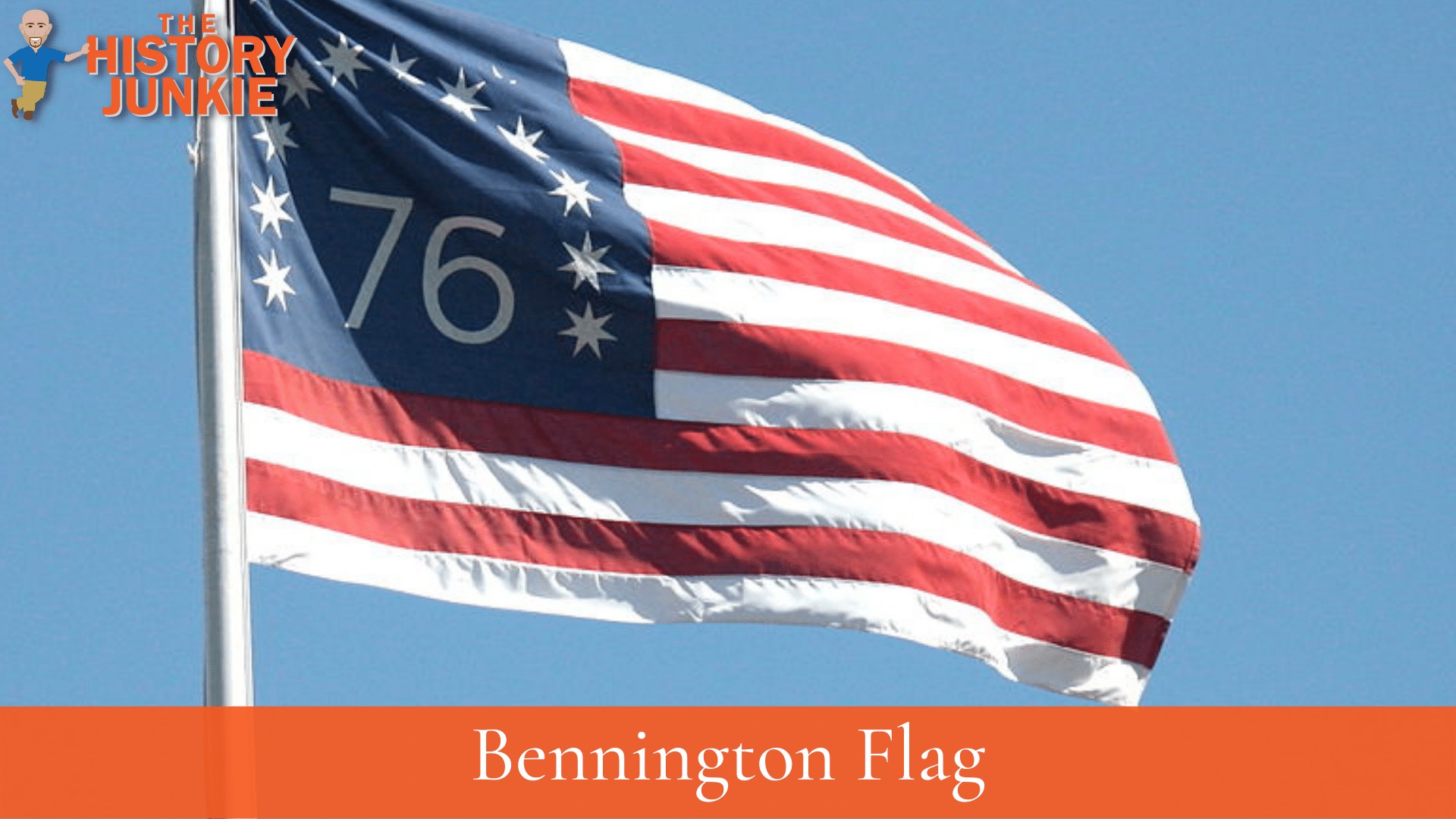With the Bennington flag, once again, there is some question about the history of the American flag.

The Revolutionary War flags, known as the Bennington, the 13-star flag, or the "76" Flag, are thought to have been used in the Battle of Bennington in 1777.
However, as with other United States flags, there are some historians who believe that this 76 flag could have been made for the Centennial in 1876 instead of it being the 1776 flag used during the American Revolution.
The flag consists of 13 red and white stripes with a blue canton. There are a total of 13 white stars (11 in an arch and 2 near the upper corners of the blue canton) and a large "76" below the arch of stars.
What is thought to be the original 13-star flag with the number 76, which was used in the Battle of Bennington, is displayed at the museum in Bennington, Vermont.
History Of The Bennington Flag
One legend claims that the original flag was carried off the field by Nathaniel Fillmore and passed down through the Fillmore family and was, at one time, in the possession of President Millard Fillmore, Nathaniel's grandson.
Philetus P. Fillmore flew a flag in 1877 to commemorate the Battle of Bennington. Mrs. Maude Fillmore Wilson donated the family flag to the Bennington Museum.
Because of the family association, the flag is also referred to as the "Fillmore flag."
Many doubt the actual use of the Fillmore flag at the Battle of Bennington.
A Green Mountain Boys flag belonging to John Stark is generally accepted to have been there, but the Bennington flag has become more strongly associated with the event.
Both Stark's flag and the Fillmore flag are held in a collection at the Bennington Museum, but the Stark flag is accepted as an 18th-century regimental banner, while the museum has dated the flag from the 19th century based on the nature of the machine-woven fabric it is made from.
The flag may have been made to evoke revolutionary sentiment during the War of 1812 (fought against England) or to celebrate the 50th anniversary of the Declaration of Independence in 1826.
The curator of textiles in the Smithsonian Institution's National Museum of History and Technology speculated that the flag may even have been a centennial banner, made c. 1876
